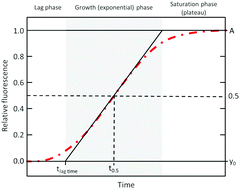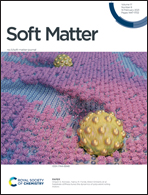Chemically modified glycogens: how they influence formation of amyloid fibrils?†
Abstract
The formation of amyloid fibrils from certain proteins stays behind a number of pathologies, so-called amyloidoses. Glycosaminoglycans are polysaccharides and are known natural constituents of amyloids in vivo. However, little is known about the effect of other naturally abundant polysaccharides, and even less is known about the effect of chemically modified polysaccharides on the formation of amyloid fibrils. In the case of low-molecular weight compounds, aromatic substances are known to often influence amyloid formation significantly. We investigated the influence of glycogen (GG) and several modifications of GG with cinnamoyl groups, benzoyl groups and phenylacetyl groups. As model systems, hen egg-white lysozyme (HEWL) and amyloid beta peptide (1–42) (Aβ1–42), which is an Alzheimer disease-relevant system, were used. The fluorescence of thioflavin-T (ThT) was used for the rapid detection of fibrils, and the fluorescence results were confirmed by transmission electron microscopy (TEM). Other techniques, such as isothermal titration calorimetry (ITC) and dynamic light scattering (DLS), were employed to determine the interactions between HEWL and the modifications. We achieved similar results with both model systems (HEWL and Aβ1–42). We showed that π–π interactions played an important role in the process of amyloid fibril formation because fundamental changes were observed in this process even with a very small number of groups containing an aromatic ring. It was found that almost all GG modifications accelerated the formation of amyloid fibrils in both model systems, HEWL and Aβ1–42, except for GG-Ph1 (1.6 mol% phenylacetyl groups), which had a retarding effect compared to all other modifications.



 Please wait while we load your content...
Please wait while we load your content...